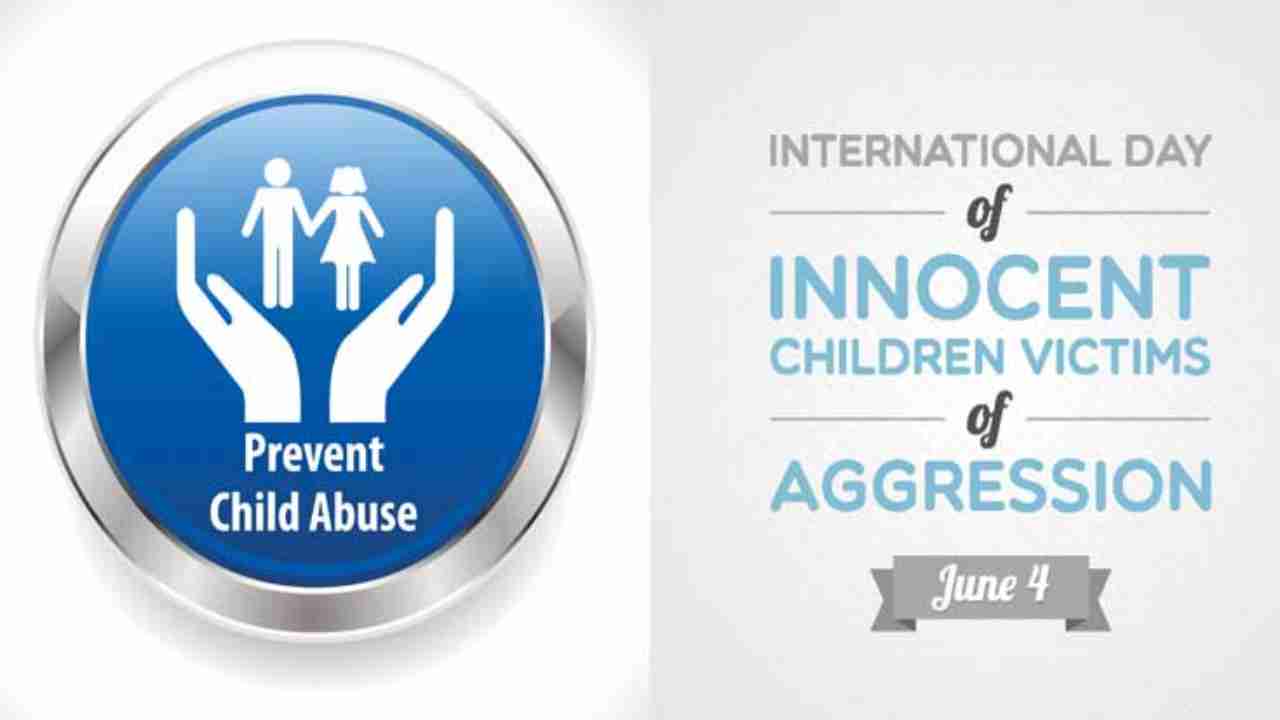International Day of Innocent Children Victims of Aggression is observed on June 4 annually. The day intends to create awareness on the impact of abuse against children and seeks to protect the rights of children.
Globally, millions of children becomes a victim of social abuse and violations.
The day was in August 1982 at a special assembly of the United Nations (UN), when member states recognised the significance of the impact of armed conflict on children and the need for action to be taken and awareness to be raised. The assembly adopted the 51/77 Resolution on the Rights of the Child, which was created out of already ongoing efforts to protect the rights of children in conflict. The impact of the war in Lebanon was the inspiration for this day.
According to the United Nations in China, the statistics of child abuse include:
- More than two million children killed in the conflict in the last two decades.
- About 10 million child refugees cared for by the UN Refugee Agency (UNHCR).
- In Latin America and the Caribbean region, about 80 thousand children die annually from the violence that breaks out within the family.
The 2030 Agenda for Sustainable Development provides us with the universal masterplan to secure a better future for children. The new agenda included for the first time a specific target to end all forms of violence against children, and ending the abuse, neglect, and exploitation of children are mainstreamed across several other violence-related targets.
Child trafficking, being a major part of child abuse, is linked to child labour which results in child abuse. Trafficked children face all forms of abuse-physical, mental, sexual, and emotional. Trafficked children are subjected to prostitution, forced into marriage, or illegally adopted; they provide cheap or unpaid labour, are forced to work as house servants or beggars, and maybe recruited into armed groups. Trafficking exposes children to violence, sexual abuse, and HIV infection.
The coronavirus pandemic has not stopped the abuse against children. As per the data gathered by the BBC, the demand for abuse imagery has shot up. Reports of obscene online material more than doubled globally to more than four million between March and April.
Experts have warned online child abuse is set to rise after 45 people were arrested and nearly 100 children safeguarded across London in the first month of lockdown.
In the United Kingdom, where 300,000 people are considered a threat to children, there were nearly nine million attempts in the last month to access child sexual abuse websites that had been previously blocked by the Internet Watch Foundation.
In India, the Childline India helpline received more than 92,000 SOS calls asking for protection from abuse and violence in 11 days since the first lockdown was announced.
Harleen Walia, deputy director of Childline India said, “Of the 3.07 lakh calls received by the ‘CHILDLINE 1098’ helpline for children in distress across the country between March 20-31, 30% were about protection against abuse and violence on children”.
According to the Palestinian Minister of Social Development Ahmad Majdalani, his ministry provided counseling and psychological services to 610 children who have been subjected to abuse in the West Bank in the past two months. 47.5% of the abused children are ages 6-12, while those between the age of 16 and 18 represent 13.5% of the cases, she added.
According to the doctors and psychologists, victims of domestic abuse are highly vulnerable and often rely on opportunistic recognition of the issue by somebody else, be it a friend, neighbor, colleague, or doctor. Being able to read the verbal and non-verbal cues from victims is essential, as well as giving them space and support to make decisions about how they wish to proceed.


















